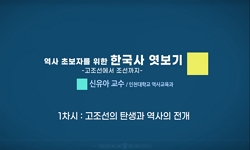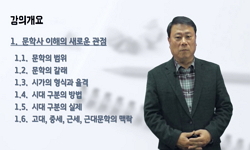일본 德島(도쿠시마) 善覺寺(젠가쿠지)에 소장되어있는 <帝釋天圖>는 화기에 제작연대가 1583년으로 기록되어 있어 조선전기 군도형식의 제석천도 가운데 기년명이 남아있는 유일한 작...
http://chineseinput.net/에서 pinyin(병음)방식으로 중국어를 변환할 수 있습니다.
변환된 중국어를 복사하여 사용하시면 됩니다.
- 中文 을 입력하시려면 zhongwen을 입력하시고 space를누르시면됩니다.
- 北京 을 입력하시려면 beijing을 입력하시고 space를 누르시면 됩니다.

일본 善覺寺(젠가쿠지) 소장 1583년 <제석천도 (帝釋天圖)> 연구 = A Study on the <Painting of Indra> in 1583, Kept by Sengaku-ji, Japan
한글로보기https://www.riss.kr/link?id=A107111928
-
저자
류정해 (동국대학교)

- 발행기관
- 학술지명
- 권호사항
-
발행연도
2020
-
작성언어
Korean
-
주제어
조선전기 ; 젠가쿠지 ; 제석천도 ; 제석천의식 ; 제석청 ; Early Joseon Dynasty ; Sengaku-ji ; Indra Painting ; Indra Ritual ; Invitation of Indra ; 朝鮮前期 ; 善覺寺 ; 帝釋天圖 ; 帝釋天儀式 ; 帝釋請
-
등재정보
KCI등재
-
자료형태
학술저널
-
수록면
7-32(26쪽)
-
KCI 피인용횟수
0
- DOI식별코드
- 제공처
- 소장기관
-
0
상세조회 -
0
다운로드
부가정보
국문 초록 (Abstract)
일본 德島(도쿠시마) 善覺寺(젠가쿠지)에 소장되어있는 <帝釋天圖>는 화기에 제작연대가 1583년으로 기록되어 있어 조선전기 군도형식의 제석천도 가운데 기년명이 남아있는 유일한 작품이다. 제석천도는 고려시대와 조선전기, 후기의 작품이 형식과 화면구성에 차이가 있고, 선행 도상을 계승하면서도 화면 구성요소에는 변화를 보이며 전개되었으며 그 과정에서 다양한 변용이 일어나기도 하였다.
善覺寺 소장 <帝釋天圖>는 제석천과 총 40位의 眷屬이 표현되어 있다. 화면 중앙에 정면을 향해 의자에 앉은 제석천 도상은 고려시대 제석천도에서 그 연원을 찾아볼 수 있는데 자세와 착의법, 의자에 표현된 龍頭장식 등 선행 도상의 특징적 요소들이 반영된 것을 확인할 수 있다. 권속 구성을 살펴보면 제석천의 좌우에는 합장을 한 보살형 天子, 화면 하부에는 제왕형 天子, 악기를 연주하는 奏樂天人, 화면 상부에는 幢幡과 天扇을 들고 있는 天女와 天童이 배치되었다. 이처럼 제석 천을 중심으로 많은 권속들이 화면을 가득 메우는 구성은 조선전기 제석천도의 중요한 특징이다.
이 제석천도의 독자성은 바로 화면에 10位 천자를 배치한 것이다. 10천자의 도상학적 근거는 경전과 불교의식집에서 파악되는데 佛說長阿含經과 大樓炭經에서는 제석천 좌우에 항상 열 명의 천자가 따라 다니며 호위한다고 하였고, 불교 의식집 勸供諸般文 「帝釋請」(1574年)에는 제석천 좌우에 천자 2位, 사방에 각각 여덟 천자가 있다고 하여 10천자 구성이 보다 더 구체적으로 드러난다. 따라서이 제석천도에 표현된 10천자는 경전과 의식집 텍스트를 바탕으로 의식에서 제석 천과 함께 청해지던 천자를 도상화한 것으로 판단된다. 善覺寺 소장 <帝釋天圖> 는 조선전기 제석천도에서 유일하게 제석천을 중심으로 10천자를 구성한 사례이 므로, 다른 제석천도와 차별성을 갖는 점에서 주목되는 작품이다. 또한 조선시대 제석천도에서 천자 구성이 일률적이지 않고 도상을 특정하기 모호한 측면이 있었 는데, 이 그림을 통해 제석천과 함께 청해지던 10천자 도상 규정을 명확히 하는데 도움이 될 것으로 생각된다.
한편 화기에 사찰의 大樓 좌우에 제석천도 2점을 봉안하였다는 기록을 통해 당시 제석천도의 배치 경향과 기능을 짐작해볼 수 있다. 제석천은 現世求福적인 민간신앙의 대상으로 인식되기도 하였지만, 이외에도 불교의식이 행해지는 도량을 淸淨하게 하는 역할을 담당하기도 하였다. 즉 일상적 의례에서는 예배대상인 제석천에게 복과 장수를 기원하고, 불교행사가 행해질 때에는 대표적인 호법신으로 사찰을 수호하는 수문 역할을 하며 다분히 그 기능을 하였을 것으로 생각된다. 기록에 의하면 16-17세기에 제석천도를 정문 또는 대루의 좌우에 봉안한 사례가 확인되는데, 이 시기에는 제석천이 다른 호법선신보다 비중 있는 존재로 인식되었던 것이 분명해 보인다. 이렇듯 조선시대 제석천도는 사찰 및 전각 옹호, 전각 내 佛·菩薩과 佛法을 수호하고 의식이 베풀어지는 공간을 청정하게 유지하는 역할을 담당하였다.
善覺寺 소장 <帝釋天圖>는 현존하는 수량이 적어 시기적 특징을 파악하는데 어려움이 있는 조선전기 제석천도에 있어서 그 가치가 실로 중요하다고 하겠다. 이 작품을 통해서 조선시대 제석천도가 전기와 후기에 어떻게 전개되고 변화하는지 그 흐름을 이해할 수 있을 것으로 생각된다.
다국어 초록 (Multilingual Abstract)
The Painting of Indra, kept by Sengaku-ji of Tokushima in Japan, shows the production period as 1583, which is the only year-recorded work of paintings of Indra in the form of group of people in the early Joseon Dynasty. The paintings of Indra showed ...
The Painting of Indra, kept by Sengaku-ji of Tokushima in Japan, shows the production period as 1583, which is the only year-recorded work of paintings of Indra in the form of group of people in the early Joseon Dynasty. The paintings of Indra showed differences in the form and screen composition of works in the Goryeo Dynasty, and the early and late Joseon Dynasty. Succeeding to the preceding icons, they also showed some changes in the elements of screen composition, and there were also various transformations in the process.
This painting represents Indra and total 40 dependents. The icon of Indra facing the front sitting on a chair in the center of screen, could find its origin from the painting of Indra in the Goryeo Dynasty. It shows the reflection of characteristic elements of preceding icons such as Indra’s posture and clothing, and the dragon decoration on the chair. In the composition of dependents, there are sons of Heaven with their hands together in prayer on Indra’s right and left, a son of Heaven with the image of king in the bottom of screen, a person who plays an instrument, and people holding a flag and fan in the top of screen. Like this, the composition in which the screen is filled with many dependents around Indra is the important characteristic shown in the paintings of Indra in the early Joseon Dynasty.
In this painting, the originality is shown in the arrangement of ten sons of Heaven in the screen. The iconological grounds for ten sons of Heaven could be found in the scriptures and Buddhist Rituals. According to The Long Sermons of Agama and Daerutangyeong, total ten sons of Heaven always follow and escort Indra on his right and left. According to the Buddhist Rituals Gwongong jebanmun (勸供諸般文) and Jeseokcheong (帝釋請 Invitation of Indra), there are two sons of Heaven on Indra’s right and left, and eight sons of Heaven on all sides, which shows the composition of ten sons of Heaven more concretely. Thus, the ten sons of Heaven expressed in this painting of Indra must be iconizing the sons of Heaven invited together with Indra to a ritual based on the texts of scriptures and rituals. As the only case of composing ten sons of Heaven around Indra in the early Joseon Dynasty, this painting grabs attention in the aspect of being differentiated from other paintings of Indra. Also, in the paintings of Indra in the Joseon Dynasty, the composition of ten sons of Heaven was not uniform, and it was ambiguous to specify icons. This painting would be helpful for clarifying the iconic regulation of ten sons of Heaven.
Meanwhile, the record of enshrining two paintings of Indra on the right and left of temple floor, shows the tendency of arrangement and functions of paintings of Indra of the time. The painting of Indra was not only perceived as an object of folk belief praying for blessings, but also playing the role in purifying the space for Buddhist ritual. In other words, in the daily rituals, the fortune and longevity were prayed to Indra as an object of worship. In case of Buddhist events, it must be fully working as a gatekeeper guarding the temple as a representative guardian god. According to records, there were cases of enshrining the painting of Indra in the front gate or the right and left of floor in the 16th~17th century, which clarifies that the painting of Indra was perceived as a being more important than other guardian gods in this period of time. Like this, the paintings of Indra in the Joseon Dynasty played roles in protecting the temples and palaces, guarding the Buddhist saints and Buddhism within palaces, and purifying the space for rituals.
Regarding the paintings of Indra in the early Joseon Dynasty, the existing amount is pretty small, so that it is difficult to understand the characteristics of the time. Thus, the Painting of Indra kept by Sengakuji is highly valuable. This work would be helpful for understanding the flow of development and change of the paintings ...
참고문헌 (Reference)
1 신광희, "한국의 나한도 연구" 동국대학교 대학원 2010
2 신광희, "한국의 나한도" 한국미술연구소 2014
3 연제영, "한국 水陸齋의 儀禮와 설행 양상" 고려대학교 대학원 2015
4 허형욱, "통일신라 범천·제석천상 연구" 홍익대학교 대학원 2002
5 박근남, "조선후반기 제석천도 연구" 한국불교미술사학회 (39) : 163-188, 2012
6 류정해, "조선시대 제석천도 연구" 동국대학교 대학원 2013
7 문신영, "조선 후기 제석천도 연구" 이화여자대학교 대학원 2012
8 송은석, "조선 후기 불교조각사" 사회평론 2012
9 박은경, "조선 전기 불화 연구" 시공사·시공아트 2008
10 정명희, "조선 15~17세기 수륙재(水陸齋)에 대한 유신(儒臣)의 기록과 시각 매체" 국립문화재연구소 53 (53): 184-203, 2020
1 신광희, "한국의 나한도 연구" 동국대학교 대학원 2010
2 신광희, "한국의 나한도" 한국미술연구소 2014
3 연제영, "한국 水陸齋의 儀禮와 설행 양상" 고려대학교 대학원 2015
4 허형욱, "통일신라 범천·제석천상 연구" 홍익대학교 대학원 2002
5 박근남, "조선후반기 제석천도 연구" 한국불교미술사학회 (39) : 163-188, 2012
6 류정해, "조선시대 제석천도 연구" 동국대학교 대학원 2013
7 문신영, "조선 후기 제석천도 연구" 이화여자대학교 대학원 2012
8 송은석, "조선 후기 불교조각사" 사회평론 2012
9 박은경, "조선 전기 불화 연구" 시공사·시공아트 2008
10 정명희, "조선 15~17세기 수륙재(水陸齋)에 대한 유신(儒臣)의 기록과 시각 매체" 국립문화재연구소 53 (53): 184-203, 2020
11 "월정사 성보박물관 도록" 월정사성보박물관 2002
12 김정희, "범천 도상의 형성과 전개 -인도에서 중국까지-" 한국불교미술사학회 (36) : 455-486, 2011
13 이승희, "당진 성당사 제석천도 연구" 인문과학연구소 (28) : 61-84, 2019
14 백남주, "금강역사상의 성립과 전개" 208 : 1995
15 안지원, "고려의 국가 불교의례와 문화" 서울대학교출판부 2005
16 안지원, "고려시대 帝釋信仰의 양상과 그 변화" 78 : 1997
17 菊竹淳一, "高麗時代의 佛畵" 시공사 1996
18 "高麗大藏經"
19 "高麗史"
20 박세민, "韓國佛敎儀禮資料叢書, 제1집" 삼성암 1993
21 "雜阿含經"
22 "東國李相國集"
23 "朝鮮王朝實錄"
24 김현중, "朝鮮時代 神衆圖 硏究" 동국대학교 대학원 2018
25 정명희, "朝鮮時代 佛敎儀式의 三壇儀禮와 佛畵 硏究" 홍익대학교 대학원 2013
26 이승희, "朝鮮後期 神衆幀畵 圖像의 硏究" 228 : 2001
27 "朝鮮寺刹史料"
28 정우택, "日本 아이치 현(愛知縣) 지역 조선시대 전기 불화의 조사 연구" 한국미술연구소 (33) : 237-269, 2011
29 정우택, "日本 四國地域 朝鮮朝 前期 佛畵 調査 硏究" 동악미술사학회 (9) : 57-89, 2008
30 "新增東國輿地勝覽"
31 井手誠之輔, "帝釋天像" 國華社 (1313) : 2005
32 錦織亮介, "天部の仏像事典" 1983
33 "大樓炭經"
34 "佛說長阿含經"
35 "佛說帝釋所問經"
36 김정희, "『한국의 불화』 5-해인사본말사편下" 1997
37 "『勸供諸般文』 釋王寺 開板"
38 Moran, Sherwood F., "Structural Features of Clay Sculpture of the Nara Period" 23 (23): 1960
39 Yi Jiyoung, "A Study of the Three Indras Painting Dated Ch'eng-hue 成化 19 (1483): On the Circumstances of Its Execution during the Reign of Sŏngjong 成宗 of the Joseon Dynasty" 2012
40 이지영, "A Study of the Three Indras Painting Dated Ch'eng-hue 19 (1483): On the Circumstances of Its Execution during the Reign of Sŏngjong of the Joseon Dynasty" 2012
41 정우택, "1483年 <三帝釋天圖> 考察" 2005
동일학술지(권/호) 다른 논문
-
조선 후기 불전조영(佛殿造營) 승려장인(僧侶匠人) 명칭과 조직의 변화
- 불교미술사학회
- 오세덕
- 2020
- KCI등재
-
조선 18세기 전반 조각승(彫刻僧) 진열(進悅)의 불상 연구 - 작풍(作風)의 변화과정을 중심으로
- 불교미술사학회
- 유재상
- 2020
- KCI등재
-
- 불교미술사학회
- 최선일
- 2020
- KCI등재
-
김홍도의 불교회화 : 이백(李白)의 「승가가(僧伽歌)」 주제를 중심으로
- 불교미술사학회
- 조인수
- 2020
- KCI등재
분석정보
인용정보 인용지수 설명보기
학술지 이력
| 연월일 | 이력구분 | 이력상세 | 등재구분 |
|---|---|---|---|
| 2027 | 평가예정 | 재인증평가 신청대상 (재인증) | |
| 2021-01-01 | 평가 | 등재학술지 유지 (재인증) |  |
| 2018-01-01 | 평가 | 등재학술지 유지 (등재유지) |  |
| 2015-01-01 | 평가 | 등재학술지 선정 (계속평가) |  |
| 2013-01-01 | 평가 | 등재후보학술지 유지 (기타) |  |
| 2012-01-01 | 평가 | 등재후보 1차 PASS (등재후보1차) |  |
| 2010-01-01 | 평가 | 등재후보학술지 선정 (신규평가) |  |
학술지 인용정보
| 기준연도 | WOS-KCI 통합IF(2년) | KCIF(2년) | KCIF(3년) |
|---|---|---|---|
| 2016 | 0.95 | 0.95 | 1.06 |
| KCIF(4년) | KCIF(5년) | 중심성지수(3년) | 즉시성지수 |
| 0.84 | 0.78 | 1.654 | 0.31 |




 KCI
KCI eArticle
eArticle




